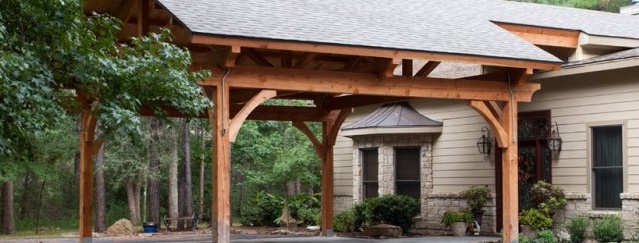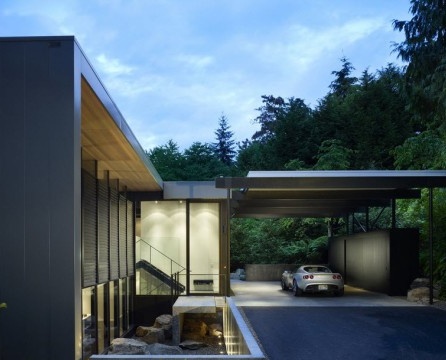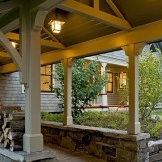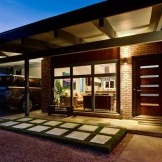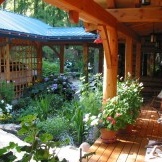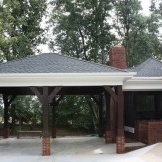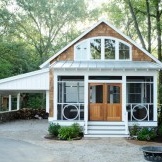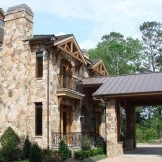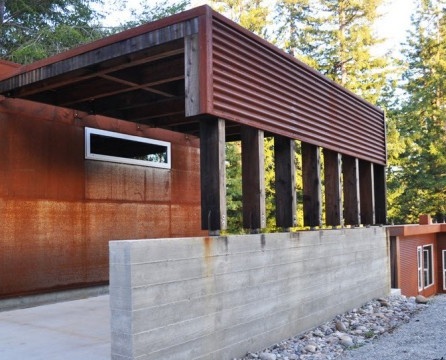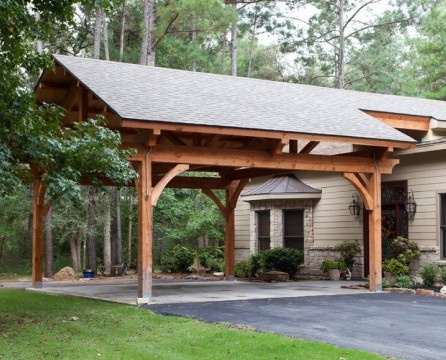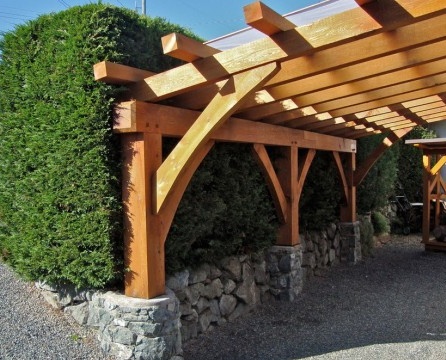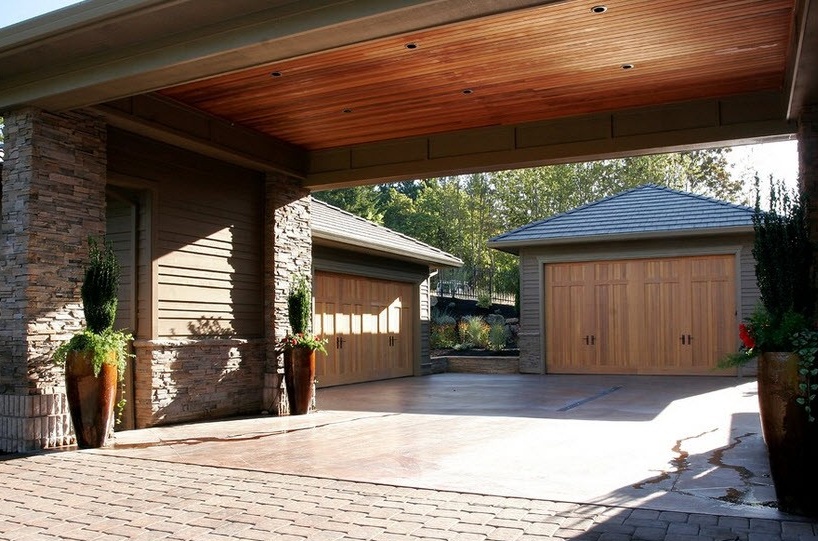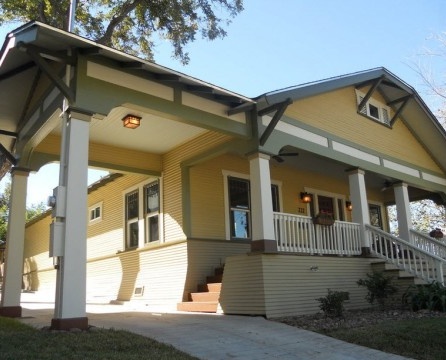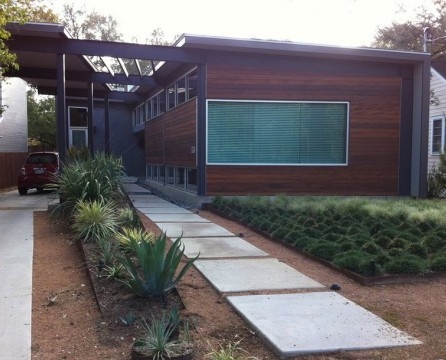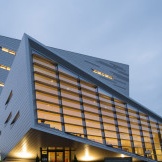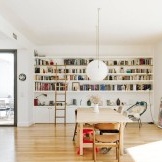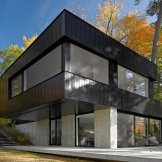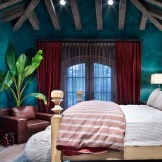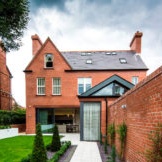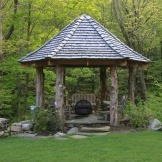Attached canopies: a variety of shapes and materials
A canopy is a useful architectural element with a large functional load. Protection from rainfall and the scorching sun is its priority. In order for such a design to be ergonomic and useful, it is necessary to think through all its details and choose the appropriate option.
What are the canopies
There are a number of varieties. Awnings can act as:
- visor
- porch roofs;
- arbors;
- terraces.
According to the method of construction, canopies are:
- attached;
- freestanding.
The main difference between a freestanding canopy and a pergola is the presence of a roof. Their main purpose is to protect objects and people from manifestations of the external environment. Such canopies are used in parking lots, in the construction of arbors, for storing firewood and other things.
Attached canopies are mounted close to the main building. It turns out that one side of them is necessarily closed. With this design, you can equip a veranda or patio.
Attached canopies can be straight. This is the easiest variety that can be used to protect the car. An inclined canopy allows rain and snow to slide down and not accumulate in dangerous quantities. Such an architectural element can be single-pitch and double-pitch, depending on the designer's intention.
There are more complex forms. For example, arched structures are very common as awnings. Such their popularity is associated with a pleasant appearance and ease of manufacture, since most materials for building canopies are well bent. A wavy canopy is also often used as a decorative element. Some materials, leaving the factory conveyor, already have a wavy shape.
Materials for creating an attached canopy
In order to build exactly the canopy that will not spoil the facade of the house and organically fit into the overall picture, you need to carefully select the materials. The color, texture and operational features of the resulting element will depend on this.
The most popular in recent years have become:
- polycarbonate;
- slate;
- corrugated board;
- plexiglass;
- tile of various manufacture;
- dense varieties of textiles.
For the basics, it is better to use:
- a rock;
- tree;
- brick;
- metal;
- concrete.
The most popular material is polycarbonate. This is the easiest and cheapest way to attach a good canopy to the house. With the help of such modern material, the canopy can be given any shape. It reliably protects from rain and excessive sunlight. Various color schemes and a pleasant texture do not spoil the facade of the house, but only decorate it, adding also a useful structural element. The frame for a polycarbonate roof can be wood or metal profiles.
One drawback of polycarbonate is its high transparency, which does not allow it to protect the place under a canopy from sunlight completely. In the case when the canopy is on the sunny side, it is better to use corrugated board from more dense materials. It will give more shade, protect the car or furniture from burnout, while retaining all the advantages of polycarbonate.
Fabric awnings give the designer a large field of activity. A variety of colors and textures will allow you to design a house and a plot in the desired style. Such a canopy is lightweight and relatively easy to install. In specialized stores, you can often find a finished fabric canopy on a metal frame, which you only need to install on the selected wall.
Fabric awning can be easily removed. With simple manipulations, this design is pressed against the wall and remains there until next use. Unlike other options, a fabric construction can be used as needed without cluttering up the space when the canopy is not needed.
Functional load on the canopy
The main purpose of any canopy is to create a comfort zone under it. The territory protected from aggressive manifestations of the environment can be used as a terrace. It doesn’t matter what this architectural element is made of. It can be made of simple materials and be a continuation of the house or be a separate element of decor, skillfully made of expensive and sophisticated components. Such are carved wooden structures or canopies using natural stone as decoration.
The dimensions of the canopy depend only on the available area and the desire of the owner of the house. It is enough for some to protect the porch with a canopy, while others place sets of furniture and other leisure items under a large visor for a large company.
Carved balusters, ceiling plinths, beautifully decorated corners and much more can be decorative elements for decorating the canopy. A variety of wood species can also become the basis for the flight of the designer’s imagination.
The most important criteria for choosing a canopy style are the surrounding details. Landscaping can have a significant impact on the choice of shape and materials of construction. A harmonious combination of all the components of the facade of the house, the design of the site and the canopy itself is the key to success.

